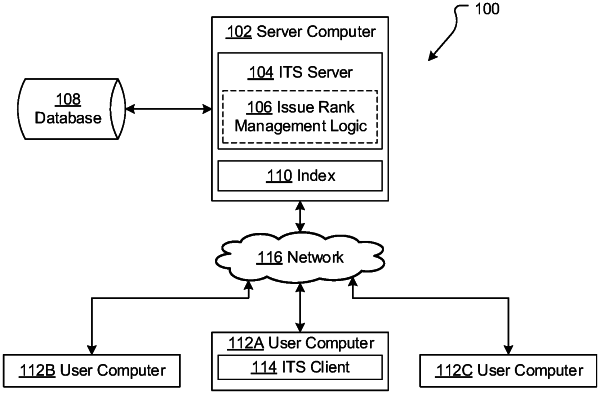| CPC G06F 16/2379 (2019.01) [G06F 16/2455 (2019.01); G06Q 10/06312 (2013.01); G06Q 10/06315 (2013.01); G06Q 10/06316 (2013.01); G06Q 10/0633 (2013.01)] | 20 Claims |

|
1. A computer implemented method for identifying a cluster of congested issues in a set of issues stored in a database of an issue tracking system, the method comprising:
selecting, from the database storing the set of issues, a pivot issue, the selection of the pivot issue based on a memory condition of a pivot rank value of the pivot issue, the memory condition based on a bit length of the pivot rank value with respect to a predefined memory space designated for rank values;
using the pivot rank value stored in the predefined memory space associated with the pivot issue, identifying a first adjacent issue having a first rank value that is successively lower than the pivot rank value and a second adjacent issue having a second rank value that is successively higher than the pivot rank value;
analyzing a first congestion condition of the predefined memory space with respect to the pivot rank value and the first rank value;
in response to the first congestion condition satisfying a selection criteria, adding the first adjacent issue to a cluster of issues;
analyzing a second congestion condition of the predefined memory space with respect to the pivot rank value and the second rank value;
in response to the second congestion condition satisfying the selection criteria, adding the second adjacent issue to the cluster of issues;
in response to determining that a selection termination criteria has been met in respect of the first congestion condition or the second congestion condition, flagging the cluster of issues as having a local congestion of issues; and
processing the local congestion of issues to increase a number of available rank addresses between adjacent issues while maintaining memory size of the predefined memory space designated for rank values.
|